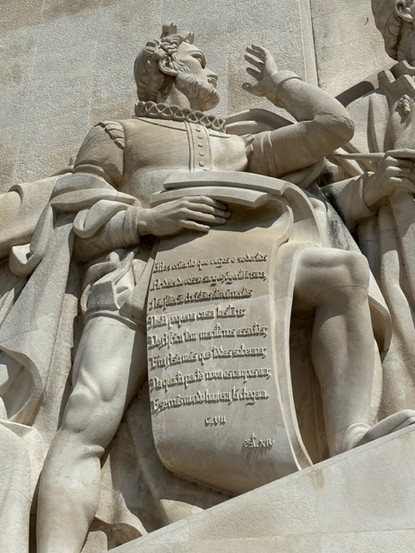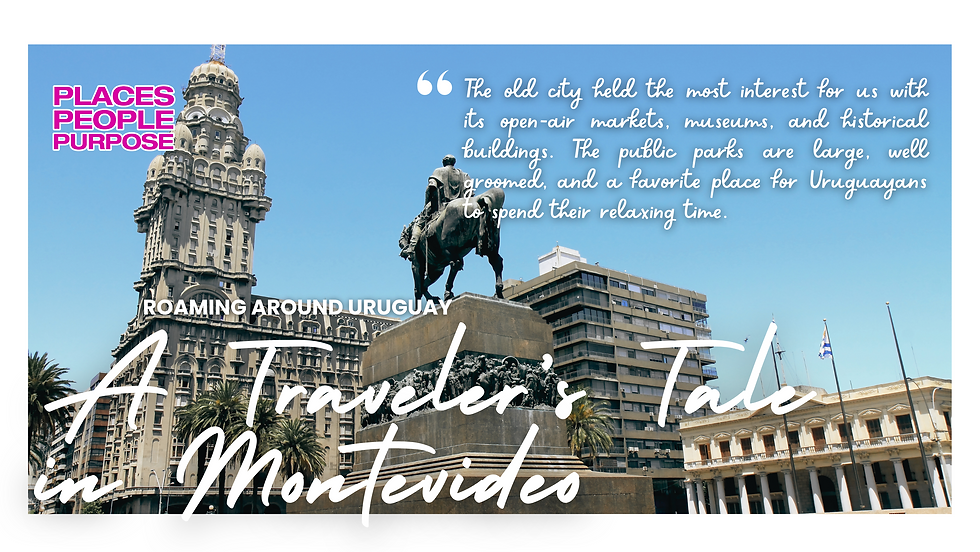Lisbon, Portugal – The City of Seven Hills and Stunning Views
- Barbara Votava
- Oct 1, 2023
- 3 min read
In this blog, I’d like to focus on the “high” spots for our time in Lisbon. I can use that term literally because that would describe all of Lisbon.

It’s the “City of Seven Hills” and it truly fits the description. With this visit, I was even more convinced of how much it resembles San Francisco with its hills, bridges, and views of the water. We were told that the bridges experience traffic jams such as you might experience in San Francisco as well.
There, the comparison stops because Lisbon is very old. In fact, it is the oldest city in Western Europe. There is much discussion and many landmarks dealing with the 1755 earthquake that immeasurably changed the earlier landscape. One of the most destructive and deadly in history, it killed more than a third of the population of the Portuguese capital, and more died with the tsunami that it triggered. The King became unable to rule, and his Minister of State, the Marquis of Pombal, took over to maneuver the recovery into a more modern and, at that time, a more “State of the Art” City, much of which is still apparent today.

We enjoyed touring the Baixa district in particular. A vibrant district with grand plazas, shopping streets, and classical buildings from the age of recovery. It is a tourist favorite, so the prices will reflect that. There is excellent public transportation to get you there, but the “Tuktuks” are plentiful and seem like a lot more fun. Tuktuks are three-wheeled vehicles with drivers that are usually more than eager to share all their information with you, in English! It seems like a safe option. With my walking limitations, we chose to get a driver and go by car.

The Belem district is another fantastic place to visit as it is the setting for many of Lisbon’s most popular tourist attractions. That would include the Monastery of Jeronimo, the Tower of Belem, and the Statue of Two Discoveries. The Monastery is beautiful and a block long. The Belem Tower dates back to the 16th century and is one of the jewels of architecture from that era. Belem is unlike other parts of Lisbon. You will find parks, wide tree-lined plazas, and scenic riverside walks.
It is also the home of the Pasteis de Belem, founded in 1837, the original Pastel de Nata custard tart. This is a uniquely Portuguese favorite, and you will see them everywhere. The shop we visited had a steady long line of patrons waiting to order. The young man behind the counter said that it was always like this in perfect English. He also wanted to know where we were from and said he wanted to visit California! Believe me, we have eaten our share of their beloved pastry.
The Statue of Two Discoveries celebrates the seafaring history of Portugal, originally constructed for the 1940 World’s Fair. It didn’t last as a wood and plaster structure and had to be replaced with limestone, concrete, and steel in the 1960s. Statues of Portugal’s great explorers are beautifully depicted on one side, and on the other are the key supporters who empowered the 15th century “Age of Discovery”. It has a beautiful panoramic view of the city from the viewing platform. A day spent in the Belem district is well worth it.
I am sure you would be impressed by the parks, the architecture, and the general hum of the city. A popular side trip would include Sintra, which they tell me is a nearby magical city. Because it is a “walking” city, I wasn’t able to go, but I loved going through the pictures with Shannon and Sherri that they took.
Lisbon is truly a city for tourists, so the best time to be there is in the off-season, that is, from March to May and September to October. I am writing in late September, and the weather has been generally shirt-sleeve weather with wonderful blue skies.



































Comments